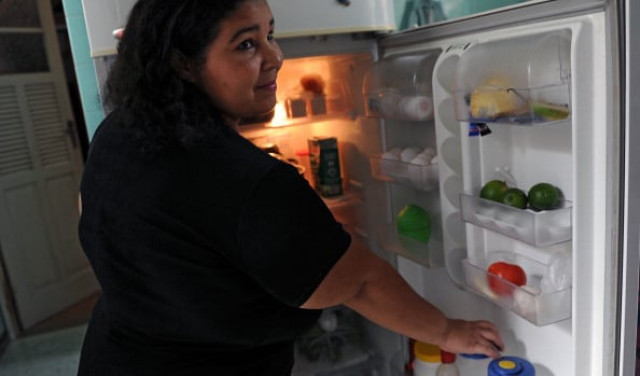
Interfere with that and you could turn your guts into a tornado with a case of food poisoning. As compiled by Daily Mail, Huffington Post, and Prevention magazine, avoid these health errors.
1- Placing raw meat on an upper shelf
Next time you’re defrosting packets of ground beef or chicken pieces before cooking; don’t put them on the top shelves. Raw meat juices could unnoticeably seep out and drip on the food below, contaminating it. Higher shelves being warmer than the lower ones weren’t designed for meat storage, not even for a short while when you’re marinating your roast. Instead, put meat in a plastic bag, bowl, or pan and store it on the lower compartments.
2- Overstuffing it
To some, a packed fridge is a sign of abundance. To a microbiologist, it’s a day of diarrhoea waiting to dawn. The cause? Cold air needs to circulate to keep food chilled and demolish bacteria, and it can’t do that in a jam-packed, crowded environment. Plus, in an overstuffed fridge, it’s hard to tell what’s fresh and what’s been in there since the Bhutto administration. Stay on top of your health game and keep your groceries more organised, leaving plenty of space for air circulation.
3- Leaving the fridge door open
Even when you’re unpacking the groceries, especially during Pakistani summer months — hot air could enter the fridge and raise its temperature. Temperature can rise up to five degrees within just one minute of the fridge door open and warm air is the ideal setting for bugs to rapidly breed. And don’t stand there with the door open, trying to figure out what to eat. That raises the temp even more!
Also, check your refrigerator every week and make sure it is running at the right temperature. Your fridge should be set between one and four Celsius, while the freezer should be at minus 18C or below.
4- Putting fruits and veggies in the same crisper
You can’t make produce last forever but there are things you can do to keep bacteria at bay for longer. First, don’t wash fruits and vegetables until you’re ready to cook them (bacteria love moisture). Second, keep your fruits in separate compartments because fruits emit ethylene, a gas that hastens spoilage in vegetables. Also, it’s essential to rotate old food with new. Make a habit of storing new stock at the back of the fridge and bringing the older stock to the front — so that it is eaten up first. This prevents food, especially veggies, from rotting and spreading bacteria around the fridge.
5- Storing eggs in the door
As hard as it is to resist placing eggs in those sculpted shelves or egg holders since they’re so handy, experts suggest it’s the worst possible place to situate them because it’s the warmest cubicle of the refrigerator. Instead, make it a habit to keep eggs in their original carton or plastic bag towards the back of the fridge where temperatures are the coolest. Serve egg dishes soon after they are prepared and don’t place cooked eggs for more than two hours in the fridge since they are very quick to provide a breeding ground for bacteria.
6- Returning poured milk to the original container
You may think nothing of pouring your child’s unfinished milk back into the carton. But it’s actually gross. That leftover stuff may have picked up all sorts of germs, which when returned to the container could cause spoiling or food poisoning. Just get rid of it, or pour less to begin with. And always keep dairy in the back of the fridge where it’s coldest. That will also discourage members of your household from drinking out of the container, a habit that’s nasty and unhealthy. Germs from that person’s mouth can be passed to others, especially if the person is fighting a cold or the flu.
7- Cleaning your fridge once a year
On the surface your fridge may look sparkling clean, but there’s likely to be millions of bugs sitting on shelves and hiding in drawers, especially if it held rotten foods at some point. Cleaning the icebox is never at the top of anyone’s weekend to-do list, but putting it off can be dangerous. Microbes thrive on crusty ketchup lids and sticky jam jars. “If a piece of raw meat falls off its plate, it is like spreading salmonella all over the fridge,’ says Richard Springer of the Society for Food and Hygiene Technology, USA. Experts recommend cleaning the fridge every week with hot water and mild disinfectant — the type you use to clean babies’ bottles.
Compiled By: Umnia Shahid
Published in The Express Tribune, December 16th, 2014.
Like Life & Style on Facebook, follow @ETLifeandStyle on Twitter for the latest in fashion, gossip and entertainment.


















COMMENTS
Comments are moderated and generally will be posted if they are on-topic and not abusive.
For more information, please see our Comments FAQ